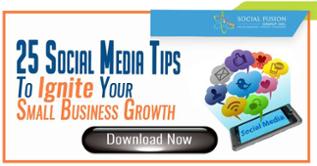Every month, we get the opportunity to pick the brain of an influencer in the marketing world. This month, we got to connect with Allen Gannett, founder and CEO of TrackMaven. For those unfamiliar with the tool, TrackMaven is a marketing analytics tool that helps businesses prove ROI.

The Interview
Thanks for being part of our Expert Interview series! Why don’t we start by you telling us about yourself. You’re the CEO of TrackMaven, a marketing analytics software, how did you get started?
My name is Allen Gannett. I’m a digital marketer, entrepreneur, CEO, creativity enthusiast, brunch devotee, and proud father of the cutest corgi in the world.
I got started the way a lot of entrepreneurs do; by chasing my curiosity. Every project I’ve ever worked on has started with a seed of curiosity. That’s the way TrackMaven began (“Hm, I wonder if we could build a tool to help marketers harness big data insights without needing a computer science or statistics degree?”) and the way The Creative Curve began too (“Hm, I wonder if there are hidden rules that dictate the likelihood of creative success?”)
I’ve had the most success when chasing that little tickle of curiosity. I’ve found that it usually leads somewhere interesting.
Let’s take a minute and talk about marketing analytics. How does your tool work? How can it help a business grow online?
TrackMaven is a marketing software company that uses data to improve traditional marketing strategies. We work with companies like MailChimp, GE, and Home Depot to uncover the topics and tactics that will help supercharge the effectiveness of their outreach.
Before TrackMaven, a lot of marketing was governed by (at worst) gut feelings and (at best) shoddy metrics. TrackMaven was built on the idea that if data was gathered and used correctly, it could make marketing a whole lot more efficient and effective.
TrackMaven helps businesses grow online by working to give them a true picture of the market they’re operating in and then suggesting strategies best suited to that market. To do that, we mix some of our proprietary data tools with a whole lot of industry experience, and then add a sizable scoop of passion. We’ve found that to be a pretty effective recipe for success.
What are some benefits of marketing analytics? What kind of KPIs should a business look for? How can this data help a business succeed?
Analytics are just a tool. It can help you target more accurately, communicate more effectively, and grow more quickly. But, just like any tool, it must be used correctly.
I like to think of marketing analytics as a telescope; it helps you examine the competitive environment around your company with more scope and detail that would be otherwise possible. But, just like a telescope, you have to know where to point your analytics. A telescope pointed at the ground or at the sun will be useless (and even dangerous). An analytics strategy that measures the wrong things or isn’t executed correctly will be equally useless (and equally dangerous). Data is a fantastic tool for helping businesses succeed, but you have to know how to use it correctly.
To your question on KPIs: In my experience, KPIs can be organized into three categories based on where they’re aimed on the traditional marketing funnel.
- KPIs that track the top of the funnel (think: awareness)
- KPIs that track the middle of the of the funnel (think: engagement)
- KPIs that track the bottom of the funnel (think: conversion)
Generally, I’ve found that people overfocus on KPIs aimed at the top and the bottom of the funnel. But you need to balance—engagement is super important too.
You can use data to help you do this. Even super basic analytics should make it easier to ensure that you’re balancing between these three categories. Hopefully, if you make those tweaks, you’ll start to get the results you’re looking for.
For a business that’s new to marketing analytics, what’s the best way to get started? Which area of analytics should they focus on? (Website, social media, email, etc.)
Before you start experimenting with analytics, make sure your audience is large enough to give you good data. I can’t tell you how many times I’ve spoken with a company that is certain that a specific marketing tool doesn’t work because they’ve run an A/B test with 23 people. Using analytics successfully is all about separating the signal from the noise. You’ll need a large enough audience to do that.
Once your audience is big enough to give you reliable feedback, you can start playing around with particular marketing areas or techniques. Try a bunch of things and see what sticks. Then, when you’ve got something that seems to be resonating with your audience, explore it and try to figure out why they like what they like. That should help you plan future marketing experiments with more accuracy.
How would these businesses take this data and convert it to actionable steps?
Okay, so let’s say I’m publishing a weekly newsletter for artisanal Pop Tart enthusiasts. I’ve talked it up at work and mentioned it to my friends, and after two weeks of sending it out, I have 30 subscribers. This is a great start. But it’s way too early to think about using analytics to make major decisions. I just don’t have enough people. A single outlier could skew my data too much.
So, I spend my time building up my audience, and a couple months later my audience has grown to about 300. Great! Analytics time!
I know that my readers enjoy handmade sugary breakfast pastries, but that’s about all I know. So I start experimenting with other types of content to see how it performs. Maybe I send out an extra edition one week with some stories about artisanal Toaster Strudel or, alternatively, the history of Pop Tarts. The data I gather with these experiments should be tremendously helpful in decoding why my audience is subscribed to my newsletter. Is it the “artisanal food” angle that my audience likes, or the “Pop Tart” angle?
Once you know the why, actionable steps will become clear. Maybe I should be also offering a newsletter about the broader world of artisanal pastries, or hosting a Facebook group for the Pop Tart community. But I won’t know until I figure out the why, and I can’t do that until I’ve grown your audience enough to apply analytics.
Let’s shift focus to your new book, The Creative Curve, can you tell our readers what it’s about? What made you get started?
I’ve always loved patterns. As a kid, I’d spend hours trying to decode the rules that governed the computer player’s behavior in my favorite video games. If I could find the pattern behind the AI, I could impress my friends with my video game prowess. As a teenager, I turned my pattern spotting eyes toward game shows. I discovered that there was a pretty reliable pattern to how game show casting directors pick contestants. I won’t give away the whole formula, but copious amounts of caffeine and an Elmo voice were each pretty important variables.
It was this passion for decoding patterns that drove me to write The Creative Curve. I believe that we’ve been told a lie about creativity. We’ve been told that creativity is innate and unchangeable; some people are born creative geniuses and some people are not. But, after researching creativity for more than two years, I can say firmly that the “innate” theory of creativity is a load of baloney.
There’s a pattern behind creativity. It’s not easy to see at first, but once you know what to look for you’ll see the same strategies used by creative geniuses of all stripes—from award-winning chefs to boundary-pushing musicians to page-turning authors. In my book, I break down this pattern into four laws of creativity that are followed unfailingly (though sometimes unknowingly) by every creative powerhouse that I spoke to. The Creative Curve is all about showing people that if they recognize the pattern underlying creative success, and follow the rules that come with this pattern, they will vastly improve their chances of achieving creative breakthroughs.
How important is it for marketers to learn creativity? How could it help them grow their business online?
Super important! I think it’s the most important skill a marketer can have.
Creativity is the tectonic plate the entire marketing world is built on. Dig down into any example of great marketing, and pretty soon you’ll hit the bedrock of creativity. New ideas catch people’s attention and make them want to work with you. That’s the whole ballgame.
Now, to the second part of your question: I believe that creativity is, if possible, even more important when building a business primarily online. When you first introduce your company to your customer online, they make decisions instantly based on only a couple bits of information. Usually your customer is just looking at a homepage, or a social media account, or an email. That’s not a lot to work with.
But that’s where creativity comes in. Creativity thrives on limitations. A friend of Dr. Seuss once bet him that he couldn’t write a book only using fewer than 255 different words. He wrote “Green Eggs and Ham” using only 50 different words.
If you’re going to build a business online, there will be limitations to how you can reach your customer. Seuss is a good model to follow. The word constraints made the book different and interesting. If you can use your creative arsenal to turn online limitations into strengths, then you’ll do very well.
Does content marketing go hand-in-hand with being creative? What other areas of marketing (social, email, etc.) could creativity affect?
If marketing is peanut butter, creativity is chocolate. Sure, peanut butter is fine on its own. You can do basic, respectable, not-innovative-but-not-terrible marketing that might be good enough to keep the lights on. But if you really want to succeed you’ll need to mix in a heavy dose of creativity. Combine peanut butter with chocolate and you’ve got a nearly irresistible combo. The same is true with content marketing and creativity.
As I said a little earlier, creativity affects all areas of marketing. Social media, email, cold calls, you name it—in any area of marketing creativity is the key to turning “okay” into “okay, we need to hire them.” If you’re trying to catch someone’s attention, you’d better be doing something different enough to get them interested but familiar enough not to scare them off. Finding the balance between those two things is the key to creative insight.
What is one thing marketers can do every day to be more creative?
Great question. I think the best thing you can do to improve your creativity is to really, truly, fully buy into the idea that your creativity is under your control.
A lot of people think creativity is magic. They know that sometimes a light bulb flicks on their head and a creative idea flashes into existence. But they’re not sure where those aha moments come from. And, even more frustratingly, they’re not sure what to do to make them happen more often. So, they throw up their hands and decide that creativity is just something you’re born with.
But it isn’t. Creativity isn’t magic, it’s a muscle. Lightbulb moments might seem random, but there are concrete things you can do to strengthen your creative powers. In my book, I explain the science behind aha moments, and lay out techniques for how to make your light bulbs brighter and more numerous. I show you how to use the machines in your very own creativity gym!
But to take advantage of any of that, if you want to become more creative every day, the first step is recognizing the true nature of creativity.
In the process of making the book, you’ve interviewed many big-name influencers such as Alexis Ohanian, David Rubenstein, and Ted Sarandos. Was there a common theme to the advice they gave? What’s the best piece of advice you’ve learned from these interviews?
“Go do.” That’s the most common and best piece of advice I picked up while doing the research for the book. I interviewed people in almost every creative profession I could think of—producers, writers, musicians, chefs, animators, YouTubers, academics, and even ice cream tasters (elementary school me would have been so jealous). And from every single one of them, I heard the same advice: “Go do!”
Would you buy a ticket to a concert by a pianist who had only ever read books about the piano? Or make a reservation at a restaurant run by a chef who had never boiled water? Or sign-up for surgery with a doctor who had only ever watched training videos?
Of course not! Then why do we expect to be superstar creators when we’ve never worked on our creativity? Creativity isn’t an inborn trait, it’s an acquired skill. And it’s a skill you acquire by doing. Time after time, in interview after interview, I heard creative powerhouses give say the same thing: if you want to improve your creativity, go create something. "Go do.”
And there you have it! We want to thank Allen for taking the time out and sharing his insight. For those interested in Allen's book, you can find it at https://www.thecreativecurve.com/ or on Amazon.
For more expert insight, check out the links below:
- What Is Native Advertising? (We Had An Expert Tell Us!)
- What Are The Benefits Of Video Marketing? We Asked An Expert
- Social Media Marketing Done Right- Insight From A Expert!




